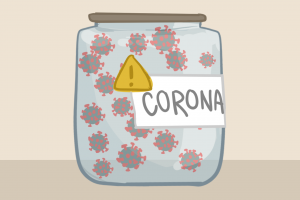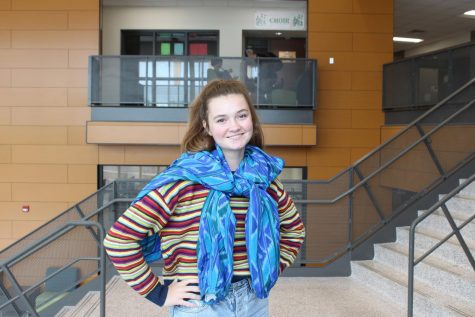Slow and steady wins the race; the importance of slowing down the spread of COVID-19
May 21, 2020
As the pandemic continues, there will continue to be many ups and downs. There have been new laws and regulations put in place such as the stay at home order and wearing masks in public. These changes are temporary solutions to the pandemic, but what about the long-term solutions? Long-term goals are necessary in order to definitively lighten the weight of COVID-19.
When discussing COVID-19, it’s important to remember that no record of any human who has potentially experienced this virus before, so no one has immunity. That said, the only realistic goal is to slow the impacts pandemic. National Public Radio’s health correspondent Nurith Aizenman explains how the process of creating a vaccine, testing the safety of it, distributing it, etc., would take around 18 months. “And so really, all of the strategies for fighting this add up to one goal, which is slowing down the pandemic, limiting the number of people who get sick – basically buying humanity time until scientists can come up with a vaccine”, Aizenman said in an interview with National Public Radio.
During these 18 months, people will be working to drastically increase the testing and treatment facility sizes in order to be able to maintain the large number of people coming into the hospitals. While workers make efforts to maintain the people getting treated in hospitals, this will take a while to do, which is why so many states have instituted a strict stay at home order. One of the main reasons for staying home is buying time for health networks to stabilize and not crumble as more patients come in.
Former senior Department of Homeland Security official Juliette Kayyem describes a way of maintaining the virus, called test and trace. “We’re trying to simply isolate and identify the people who are sick or potentially sick and then isolate anyone who would have been near them”, Kayyem said in an interview with National Public Radio. The test and trace system will allow for isolation of those who are infected, which would, in turn, give people who are not sick more freedom to go out of their homes. This doesn’t mean that everything will go back to normal, but it’s a way to start the slow and steady process of finding a sense of normalcy. Kayyem also mentions how it’s hard for state and local officials to know what the long-term strategy is because they don’t know how long they will have to impose the strategy in order for it to be effective.
While some states are being more lenient towards allowing social interaction, it’s important to still take safety precautions so that everyone can stay safe. Ways to do this include wearing a mask in public, disinfecting any food products recently purchased in a store or restaurant, and washing your hands frequently. It’s easy to feel overwhelmed by all of this new information towards COVID-19, but just remember that you’re not alone.


